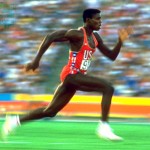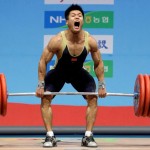Do you know the difference between Power and Strength?
Most people don’t make the distinguishment between the two. As often the two words get used interchangeably. Often we think about Power or Strength, we conjure up images in our mind about the Muscular Power Lifter, completing a 400 pound bench press. Along with idea of the 220 pound wrestler, power slamming his opponent in a two leg take down. Yet there is a difference between Power and Strength. Any seasoned competitive athlete may have one point or another recognized that difference. Noticing a fellow competitor that has a “different” type of strength and power. In some cases defying expectations on the amount of Power than can be generated. Even when the person is small in stature.
The distinction between Power and Strength can be more closely revealed in the definition of Power according to Websters Dictionary.
Power (Definition in relation to Physics) :
a. work done or energy transferred per unit of time. Symbol: P
b. the time rate of doing work
The important factor in looking at the definition of Power is the time factor is stressed. Without consideration of the time it takes for energy to work, there could be no definition of power. In the Websters definition there is reference to the “rate of work” or “energy transferred”. The “rate of work” or “energy transferred” in the context of Athletics can be thought of as the amount of strength applied (Which partially relates to the intensity of muscular contractions). As a result the definition of Power in Athletics can be better summarized as :
AMOUNT OF POWER = STRENGTH / TIME
Adjusting either of these variables would equal more power. Examination of the two subjects below illustrates this point. Person A at 4 units of power per second would be more powerful than Person B. This would be on the basis of producing more power in a shorter time frame.
Example A ) 12 Units of strength in 3 seconds. 12 Divided by 3 = Capable 4 units of power in 1 second. (Example A is more powerful)
Example B) 30 units of strength applied in 10 seconds. 30 Divided by 10 = Capable 3 units of power in 1 second.
Note that Person B has a greater maximum strength at 30 units over strength compared to Person A. Yet Person A is capable of reaching their maximum strength quicker. So Person A can produce more strength per second. Despite having a smaller maximum strength, Person A is more powerful.
In most cases in Athletics, the Athlete who can reach his maximum strength quicker is the more effective athlete. Since most sports are time sensitive and require strength to be applied quickly. Ultimately defining what the Explosive Athlete is all about.
THE DIFFERENCE WHEN POWER VERSUS STRENGTH IS USED IN ATHLETICS
Power has more application when there is significance to the time frame when strength can be applied. A good example of this is the Brazilian Jiu Jitsu martial artist applying a choke hold once in proper position. This would be utilizing more strength than power since the tension would increase slowly. Since they have time to increase the intensity of the muscular contraction. As the movement is already locked into place. So the time frame to apply the strength is not as important. Whereas the boxer launching a punch to his opponents head is using more power than strength. Since the acceleration (Time frame) in which the punch is being delivered contributes to its overall force. (As the definition of Force = Mass x Acceleration) Power is crucial when strength needs to be applied quickly.
It’s not always possible to visibly see which athlete is more powerful. Particularly by looking at their physique alone. As the 155 pound athlete may have a lower amount of muscle mass. But could still in fact could be more powerful than the 180 pound athlete. Quiet simply because the 155 athlete can accelerate the intensity of their contraction quicker and as a result more powerfully. But most athletics require a quick response, so often power versus strength is utilized. Yet in modern society, we tend to lean toward the development of strength. Since the result from developing strength is bigger muscles. Which presents an aesthetically pleasing physique. However the true athlete of power is beyond appearances.
WHAT IS THE COMMON METHOD ATHLETES USE TO TRAIN FOR POWER AND STRENGTH TODAY?
Since the distinctions aren’t often made, most athletes spend more time doing strength training. Where the most common form of training strength today is by lifting weights. Conducted through Bodybuilding or Powerlifting exercises.
For those who do understand the distinction, Power is usually trained by explosive resistance exercise. Using tools such as Plyometrics, Medicine Balls, Kettle bells, Sledge Hammers / Tire training and Olympic Weight lifting. (Clean and Jerk & Snatch).
These methods can help to develop power. Yet they have a high risk of injury since the movements can be jerky and stress the joints in an unnatural way. In some cases they don’t define the stimulus in an exacting scientific manner. So progress can sometimes be slow and hard to measure. Making it harder to understand what to do next when one has plateaued. (Which eventually happens with all training programs and requires specific measures to adjust)
HOW DOES NIP™ TRAIN POWER AND STRENGTH DIFFERENTLY FROM TRADITIONAL METHODS?
NIP™ stands for “Neural Isometric Power” and is the program to train Power and Strength found on this website. Arguably NIP™ allows you to develop Power and Strength more effectively by saving you time (As little as 20-30 minutes per week). Allowing you to reach your specific potential, by clearly outlining the requirements to develop with a logical and scientific method.
NIP™ is based on 3 on specific principals. These 3 principals are outlined as follows:
1) To stimulate change Overload is required : The natural state of the body is to maintain balance. This is known as the state of equilibrium. It is through the overload of our physiological system that changes occur. Overload acts a STIMULUS. Since it a form of stress on the body. Encouraging the body to expand upon its natural state. Where the body allocates resources as a defensive mechanism. Similar to how the sun darkens skin pigmentation from intense sunlight. The body builds stronger muscles in response to the intense demands of a weight training regimen. However a light or casual weight training program wouldn’t create a muscular physique. As the Overload would not be significant. Similar to how tanning in the early spring, when the sun isn’t intense enough will not cause a sun tan. The key is the body must be overloaded first to incent the physiological system to change.
2) Stimulus must be specific : In utilization of the Overload principal, there are a variety of ways to stress the body. As one can overload ones endurance, flexibility and strength. Taxing one component will often not yield appreciable results in another area. Since the adaptive resources of the body are very specific and limited. For example stretching might help to make you more flexible. But it will do little to help build muscle mass. Since stretching would be a different way to overload your muscles. The overloaded system must be trained with as much specificity as possible.
3) Change occurs during rest : Adequate rest is imperative for change. Significant adaption to stress often does not occur while the stress is being applied. It is typically after a break from the stress that changes occur. Muscles don’t often get stronger immediately when working out. Due to fatigue they actually weaken during training sessions. The resulting stress actually leaves them in a damaged overloaded state. Where the muscle fibers are torn down. It is during rest that the body allocates resources to become stronger or more powerful than before. Rest means not working out. Giving you time to sleep and relax. Even with the appropriate stimulus, if adequate rest is not given adaptions will not occur. This often leads to the state of overtraining.
These three principals serve as the foundation of the NIP™ program. Moving from a high level to a more specific outline in following pages. Continue to view “The Program” page to understand how NIP™ principals apply in practice.





Leave a Reply